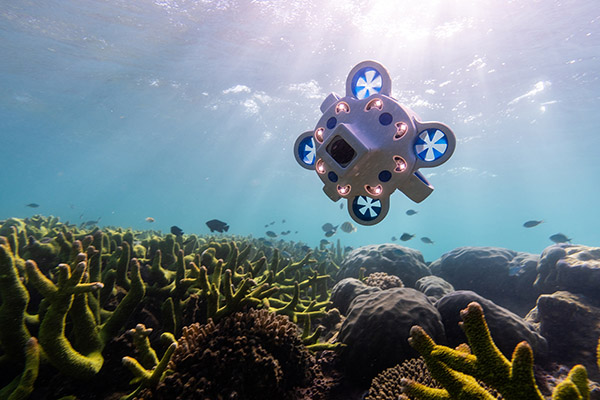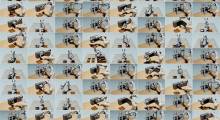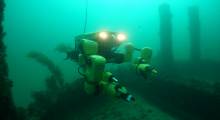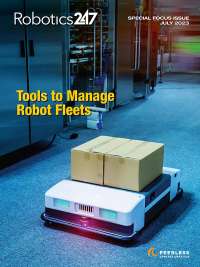Advanced Navigation last month announced what it claimed will be Australia's largest subsea robotics facility. It said the research and development and manufacturing facility in Balcatta, Western Australia, will accelerate production of the company's underwater technologies, including its Hydrus autonomous robot.
“Now more than ever, there is a need to open up the earth's oceans, to make data and knowledge more accessible to global communities, research institutions and governments,” said Xavier Orr, co-founder and CEO of Advanced Navigation. “Western Australia has always been an exploration hub for ocean discoveries.”
Engineers Orr and Chris Shaw founded Advanced Navigation in 2012 to commercialize university research on inertial navigation using artificial intelligence. The Syndey, Australia-based company said it has progressed into several new and deep technology fields, including underwater acoustics, GNSS antennas and receivers, radio frequency systems, inertial sensors, robotics, and quantum-enhanced inertial navigation.
In November 2022, Advanced Navigation raised AUD108 million ($68 million U.S.) in Series B funding, brginging its total funding to AUD134 million ($85 million).
New center to help speed launch of subsea products
“The new subsea centre will help Advanced Navigation meet the growing demand for high-grade underwater data, bringing new and existing solutions to market far more quickly and efficiently,” stated Orr. “With the goal to grow our subsea team threefold, we are confident this investment will deepen and advance our understanding of the oceans.”
The Perth facility will be located on a 5.5-acre site and be split between development, high-volume production, and continued research and expansion of subsea navigation and robotics technologies, said Advanced Navigation.
Laura Hayward, head of communications at Advanced Navigation, said in a press release that the company also expects to expand its underwater AI division.
“Advanced Navigation is a proud stalwart for independent, in-house design and vertical integration that has ushered in many innovations, including extreme miniaturisation of pressure-tolerant electronics, sophisticated sonar technologies, and AI-based autonomous systems,” she wrote. “The new centre also includes full testing facilities with several marine simulation environments to ensure reliable performance and the highest-quality production.”
Talent to reshape the 'blue economy'
Advanced Navigation said its underwater navigation and robotics innovations are used across the “blue economy,” supporting research, aquaculture, offshore renewable energy, transportation, surveillance, biotechnology, and high-tech services.
The company said Hydrus makes data capture simpler and more accessible for undersea research, survey, and exploration. The autonomous underwater robot's design synthesizes numerous navigational, sonar, propulsion, and data-capture technologies with sophisticated artificial neural network (ANN) intelligence, said Advanced Navigation.
With support from research institutions including the University of Western Australia (UWA), Curtin University, and philanthropic organization Minderoo, Advanced Navigation said it is continuing to establish sustainable technologies to foster the growth of the blue economy, nationally and internationally.
“It’s exciting to see Advanced Navigation continue to grow its team of engineers in Western Australia,” said Justin Geldard, a coastal and ocean researcher at the UWA Ocean Institute. “At UWA, we are researching how natural and artificial reef structures can protect coastlines by dissipating wave energy.”
“Hydrus is a key tool in mapping and surveying these underwater structures,” he said. “The technology makes more efficient use of our funds and ultimately scales up our ability to collect high-resolution data.”
Advanced Navigation looks to the future
The company noted that the subsea center is just one of several investments it has made as it continues to expand its global reach and capabilities.
Advanced Navigation has established headquarters in Sydney with research centers throughout Australia. They include Brisbane for aerial drone technology, Canberra for photonic and laser technology, and Newcastle for quantum sensing.
The Australian manufacturer said it supplies some of the biggest companies in the world, including Airbus, Boeing, Google, Apple, and General Motors. Advanced Navigation added that it has sales offices around the world and that it maintains carbon-neutral operations.
In addition to novel autonomous subsea robotics, Advanced Navigation delivers AI-enhanced navigation technologies for land, sea, air, and space applications. The company said it “is committed to developing innovative products and systems that will be catalysts of the autonomy revolution.”
Article topics
Email Sign Up


















